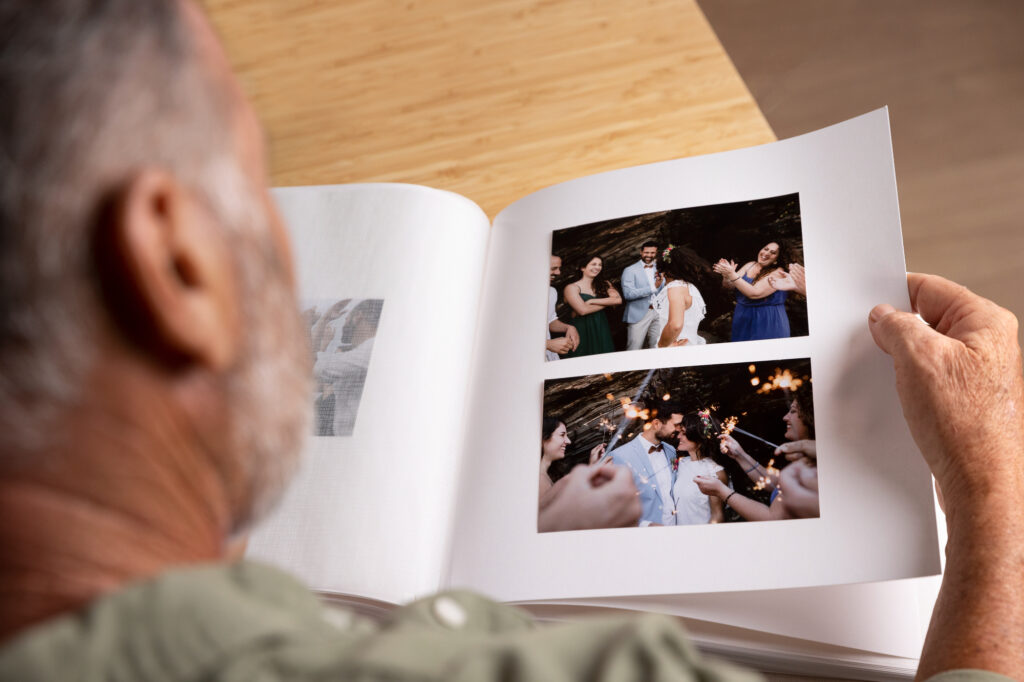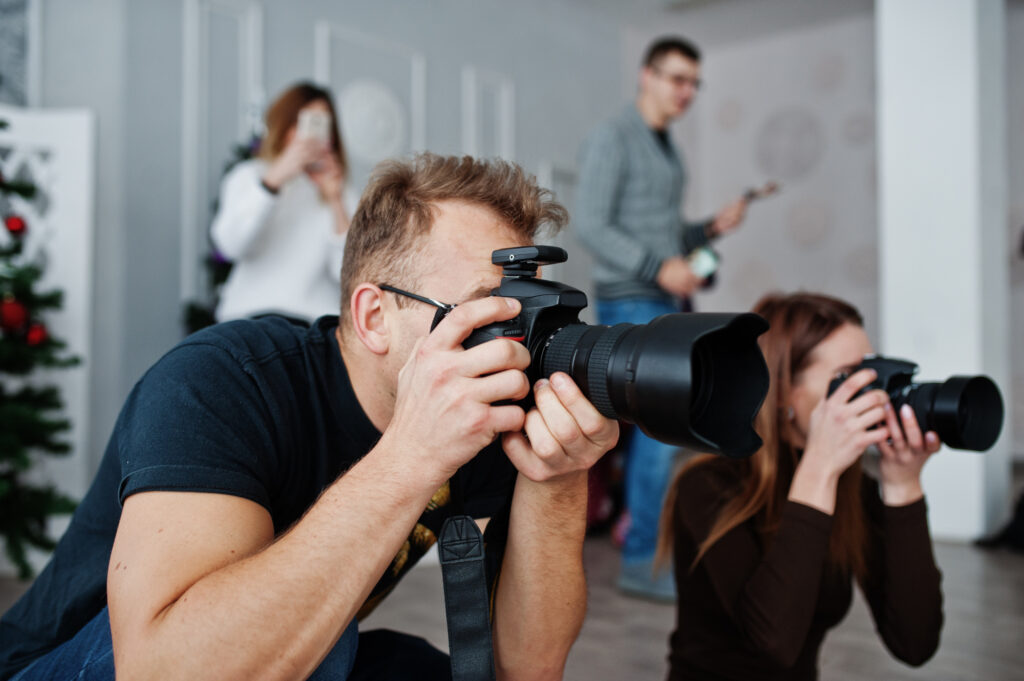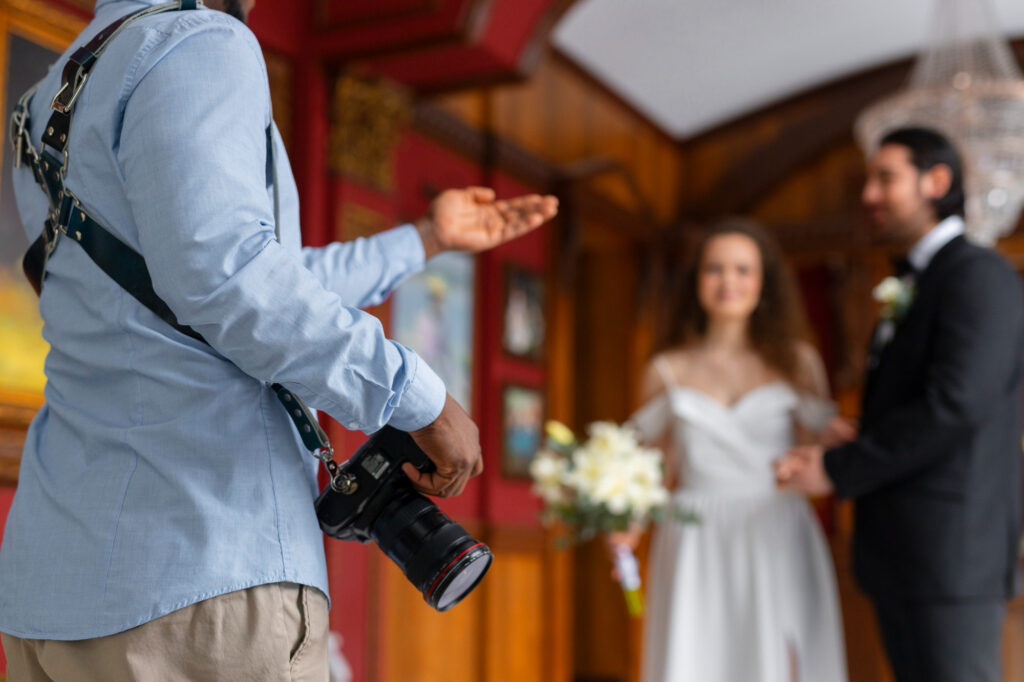If you’re passionate about photography and love capturing special moments, you may be wondering how to get started in wedding photography. Wedding photography is an exciting and rewarding career, but breaking into the industry can be challenging. In this guide, we’ll walk you through the essential steps to becoming a wedding photographer, from gaining experience to booking your first clients.
Steps to become a wedding photographer
Starting a career in wedding photography requires patience, practice, and dedication. Whether you’re a hobbyist looking to turn professional or a new photographer eager to enter the industry, these steps will help you build a strong foundation.
Learn about wedding photography
Before you start, it’s essential to understand what wedding photography involves. Unlike other types of photography, weddings require a combination of portrait, documentary, and event photography skills. You’ll need to be able to capture emotions, details, and candid moments while working under time constraints.
Some ways to learn about wedding photography include:
- Studying wedding photography blogs and guides.
- Watching online tutorials and courses.
- Taking wedding photography classes to improve your technical skills.
- Attending weddings as a guest and analyzing how professional photographers work.
- Experimenting with different photography styles to discover your strengths.
- Understanding different lighting techniques to adapt to various wedding environments.

Workshops and styled shoots
One of the best ways to improve your skills and build your portfolio is by participating in workshops and styled shoots. These events provide an opportunity to practice wedding photography in a controlled setting with professional models, decor, and lighting.
Choose the best workshops or styled shoots for you
When selecting a workshop or styled shoot, consider:
- The experience level required.
- Whether it includes hands-on shooting opportunities.
- The quality of the instructors and feedback provided.
- The variety of styles and settings offered.
- Opportunities to network with other photographers and vendors.
- Learning how to pose couples naturally to capture authentic emotions.
Work with other photographers
Gaining experience by working with established wedding photographers is an excellent way to learn the industry and improve your skills.
Start as a second shooter
Many wedding photographers hire second shooters to assist them during events. As a second shooter, you’ll:
- Capture alternative angles and candid moments.
- Learn how to manage wedding timelines.
- Gain hands-on experience without the full responsibility of lead photography.
- Observe how professionals interact with clients and handle challenges.
- Develop confidence working in high-pressure environments.
- Practice managing different lighting situations, from outdoor ceremonies to dimly lit receptions.

Contact potential clients
Once you feel confident in your skills, start looking for potential clients. Here are some ways to attract bookings:
- Offer free or discounted sessions for friends and family.
- Network with wedding planners, venues, and vendors.
- Share and showcase your work on social media platforms and photography forums.
- Ask for referrals from satisfied clients.
- Run promotions or giveaways to attract engaged couples.
- Build strong relationships with past clients, as word-of-mouth recommendations can be a powerful marketing tool.
Create a website to show your portfolio
A strong online presence is essential for booking clients. A professional website showcases your portfolio, provides information about your services, and helps build credibility.
Your website should include:
- A curated selection of your best wedding photos.
- An “About” page with information about you and your style.
- Pricing details and package options.
- Contact information and a booking form.
- Testimonials from past clients.
- A blog where you share wedding photography tips and past client experiences.
- A FAQ section addressing common client concerns and booking policies.
Submit your best photos to magazines
Getting featured in wedding magazines and blogs can help you gain recognition and attract clients. Submit your best work to publications that feature wedding photography, and consider networking with editors and bloggers.
Tips for your first wedding as a photographer
Your first wedding as a lead photographer can be intimidating, but with preparation, you’ll set yourself up for success. Here are some key tips:
- Plan ahead: Meet with the couple beforehand to understand their expectations and preferred shots.
- Create a shot list: List all the essential moments you need to capture, including getting ready, the ceremony, and the reception.
- Scout the venue: Visit the location in advance to find the best spots for photos and prepare for lighting conditions.
- Bring backup equipment: Have extra batteries, memory cards, and a second camera in case of technical issues.
- Dress professionally: Blend in with the wedding guests while staying comfortable for a long day of shooting.
- Stay organized: Keep track of your schedule, shots, and client expectations throughout the day.
- Use two cameras: One with a wide-angle lens and one with a zoom lens for quick transitions between shots.
- Direct but don’t interrupt: Guide couples naturally while letting them enjoy the moment.
- Capture details: Photograph rings, flowers, invitations, and other decor elements to add variety to your portfolio.
- Be prepared for unexpected moments: Weddings are unpredictable, so be ready to adapt to changing conditions.
- Use natural light whenever possible: It creates a softer and more flattering look compared to artificial lighting.
Essential equipment for wedding photography
Starting as a wedding photographer requires investing in the right gear. Here are some must-have items:
- Full-frame DSLR or mirrorless camera: Delivers high-quality images even in low-light conditions.
- Wide-angle and telephoto lenses: Essential for capturing a variety of shots.
- External flash and lighting equipment: Helps in dark reception venues.
- Tripod and monopod: Useful for steady shots in different conditions.
- Memory cards and extra batteries: Ensures you never run out of space or power.
- Editing tools: Adobe Lightroom and Photoshop are considered industry standards.
- Camera harness or strap: Reduces strain during long wedding shoots.
- Reflectors and diffusers: Helps control lighting in different situations.
Start your weddingphotography journey today!
Now that you know how to get started in wedding photography, it’s time to take action. If you’re looking for inspiration or want to learn from a seasoned professional, check out the work of Orlando Rivera, a top wedding photographer in Barcelona.
Contact Orlando today for expert wedding photography services and inspiration to kickstart your career!
